6+ SAMPLE Medical Training Proposal
-
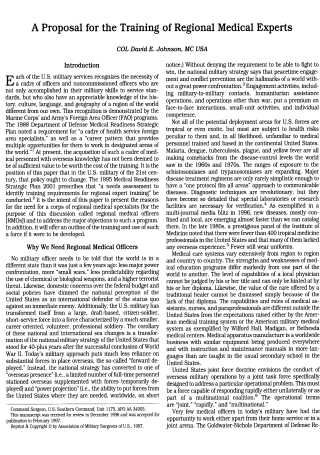
Medical Experts Training Proposal
download now -
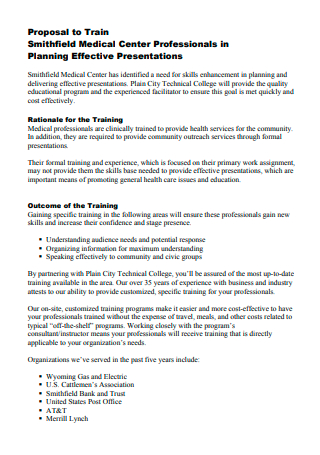
Basic Medical Training Proposal
download now -
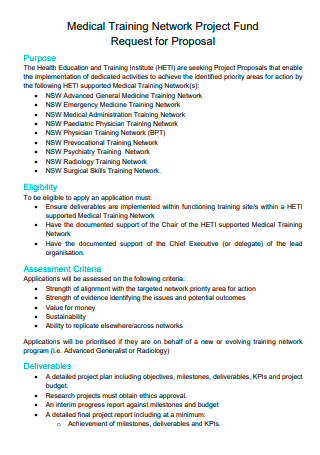
Medical Training Network Project Fund Proposal
download now -
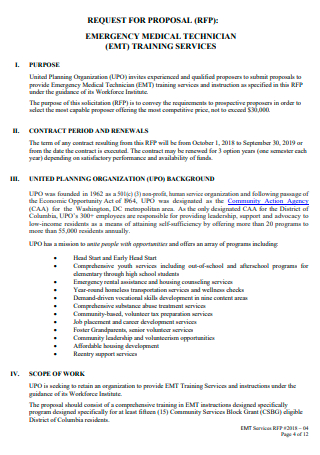
Emergency Medical Technician Training Services Proposal
download now -

Medical Training Program Proposal
download now -
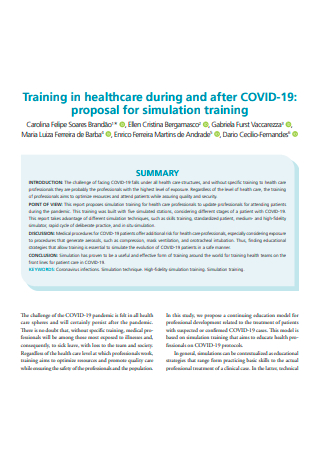
Medical Training Proposal Example
download now -
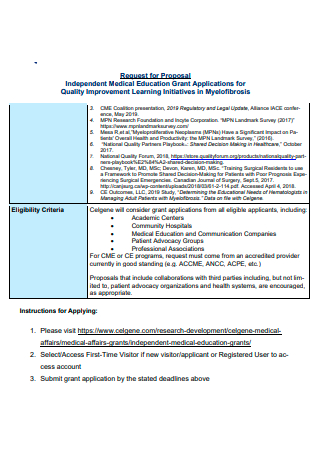
Independent Medical Education Training Proposal
download now
FREE Medical Training Proposal s to Download
6+ SAMPLE Medical Training Proposal
What Is a Medical Training Proposal?
Levels in Medical Education
Benefits of Basic Medical Training
Steps When Writing a Medical Training Proposal
FAQS
Is Becoming a Doctor Difficult?
Can Anyone Participate in Medical Training?
What Is the Importance of a Medical Training Proposal?
What Is a Medical Training Proposal?
A medical training proposal is a written suggestion for either medical practitioners or medical students to receive hands-on training. Its purpose is to evaluate a medical personnel’s competence and expertise. It also attempts to teach basic medical education and to re-learn medical-related knowledge. The goal of medical training is to help teach a medical professional about new methods or to introduce them to best alternatives. Especially if there have been significant developments or a recent need to be aware about a disease, in this example, a lethal virus. It also promotes workplace safety and teaches medical professionals about safe work methods. After all, it is expected that their ability to execute risky surgeries or provide reliable assessments remains intact.
Competent physicians are in high demand, particularly during the pandemic. As a result, the majority of them attend medical training or seminars to refresh existing information gained during medical school. In 2019, the average global life expectancy is roughly 73.4 years. The World Health Organization compiled this information. Ischaemic heart disease (IHD) is the largest cause of death, accounting for 8.9 million deaths. As a result, it is clear how much doctors must constantly undertake medical training to keep up with new discoveries. The information they would acquire may be life-changing for one patient.
Levels in Medical Education
To become a doctor, medical students must spend around 10-14 years of education. This entails attending medical school and working in a hospital. Even if they are working, they must still scale a ladder. There is also a board exam to complete to verify their expertise on their specialty. To properly obtain a license to practice, considerable effort and lengthy training are required. And between those 14 years or more, they must also submit peer-reviewed medical research. Let us now investigate the levels of medical education.
Benefits of Basic Medical Training
Even practicing physicians must continue to educate themselves to keep their licenses. This includes attending seminars and publishing peer-reviewed articles. And all of this is medical training. As a result, for a regular person to actively participate before waiting for emergency responders, they must also have a basic understanding of how to administer first aid. Basic medical training is essential for healthcare workers such as nurses, emergency responders, and even firefighters. They are usually the first to assess the patient. And here are some of the advantages of basic medical training.
Steps When Writing a Medical Training Proposal
A medical training program for regular employees or medical professionals is a serious undertaking. It denotes preparation. A medical training proposal template serves as the foundation for the project. However, the elements it includes are rather similar to one another. A medical training is an eye-opening experience. Let’s simplify things by following the steps below.
-
Step 1: State the Purpose
The purpose is stated in the first section of your proposal for medical training. The training’s objective is the goal of the entire gathering. One goal might be to teach new medical techniques. It may be able to impart new medical findings that improve surgical precision. In the event of a pandemic, medical training with the goal of creating simulations based on possible scenarios. The goal of any medical training is to update previously learned material while also introducing peer-reviewed advances. A medical education may also be required for a medical practitioner. Who is eligible to attend will also be determined by the purpose.
-
Step 2: Identify Eligible Individuals
Some medical trainings may necessitate prior knowledge of specific medical topics. Alternatively, in trainings, it is tailored to a field of study. As a result, only those who fall within the specialization are eligible to attend. By determining eligibility, it is also possible to determine any prerequisites for attendance. This section also identifies the necessary documentation that support the attendees’ claims. Since prospective participants would have to be evaluated for their qualifications. To avoid confusion, a set of criteria should be created.
-
Step 3: Hosting Organization
The person presenting the medical training proposal should identify themselves inside the proposal. Introducing their organization and what they do offers their organization authority. It also establishes how qualified they are to host the medical training. As no one can just gather a group of medical specialists at their whim. They must also be honest and transparent about their organization. They can list previous medical trainings that they have hosted.
-
Step 4: Expected Outcomes of the Training
The desired outcome of the medical training is stated in one of the proposal’s final parts. Not only is the aim important, but so is the exact effect they want their participants to have. It also specifies the activities that must be carried out in order to achieve the intended result. There must be a norm or understanding that participants are expected to follow. Otherwise, all of your medical training will be for naught. Whether the outcomes are in the form of knowledge or skill, they should be mentioned in the proposal.
-
Step 5: Indicate the Duration of the Training
Some medical training can last a few hours or several days. Of course, it must have logical justifications for its length. Establishing the duration of the program also helps attendees or sponsors set expectations. Both money and time also are difficult to come by. Medical practitioners, in particular, are extremely busy. Working in a hospital, where emergencies might occur at any time, does not leave much free time. There’s also the matter of their practice being halted to accommodate the training. It’s very difficult for surgeons. They must recognize the limited amount of time that these individuals can devote.
FAQS
Is Becoming a Doctor Difficult?
Each profession has a different level of difficulty. Being a doctor necessitates perseverance and dedication. It demands devotion to the profession itself. And the amount of medical knowledge that must be studied and practiced is considerable. So, certainly, it can be difficult and pricey. There’s also the clinical side of applying what you’ve learned to execute medical operations. Being a doctor is a challenging and rewarding career. The fact that they can provide diagnosis and treatment guidance is itself a commendable skill.
Can Anyone Participate in Medical Training?
In the medical training proposal, it will be indicated who are eligible to participate. Some medical trainings given to regular employees as part of preparation to disasters can allow regular citizen to participate. But medical education is also a medical training. So yes, if you go to medical school or has the pre-requisite required for a specific training, then you can participate.
What Is the Importance of a Medical Training Proposal?
A medical training proposal is significant because it outlines how the training will take place. It also specifies its goal and expected outcomes. It also assists in determining who should and should not participate. A proposal is fundamental because it serves as the foundation for subsequent implementation. It serves as a guide to ensure that the medical training runs smoothly.
Healthcare and medicine have progressed a long way. And it will be studied further and breakthroughs will be made. Medical trainings are how that knowledge is disseminated in the medical field. So don’t be hesitate to create a medical training proposal ppt! More medical training proposal sample pdf can be found at Sample.Net! Download now!
